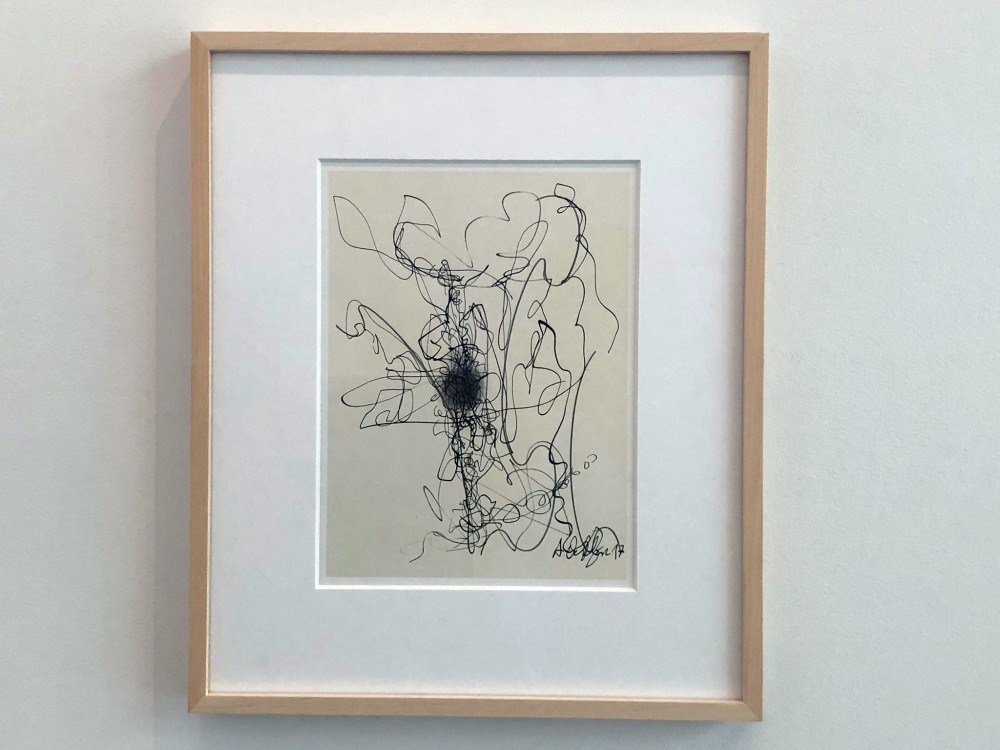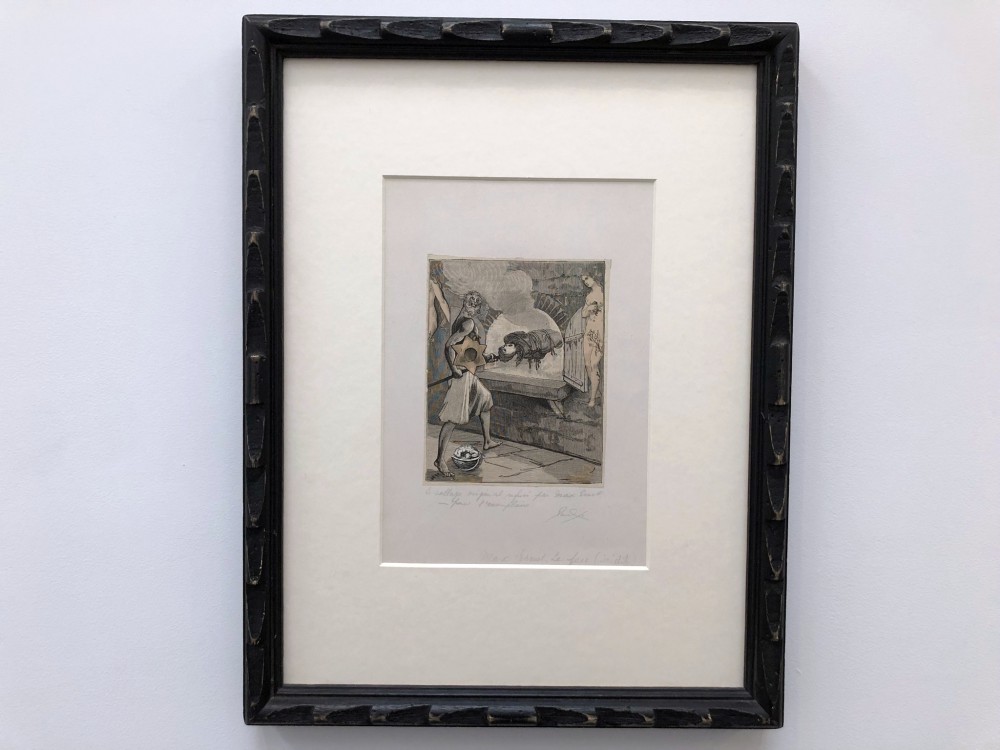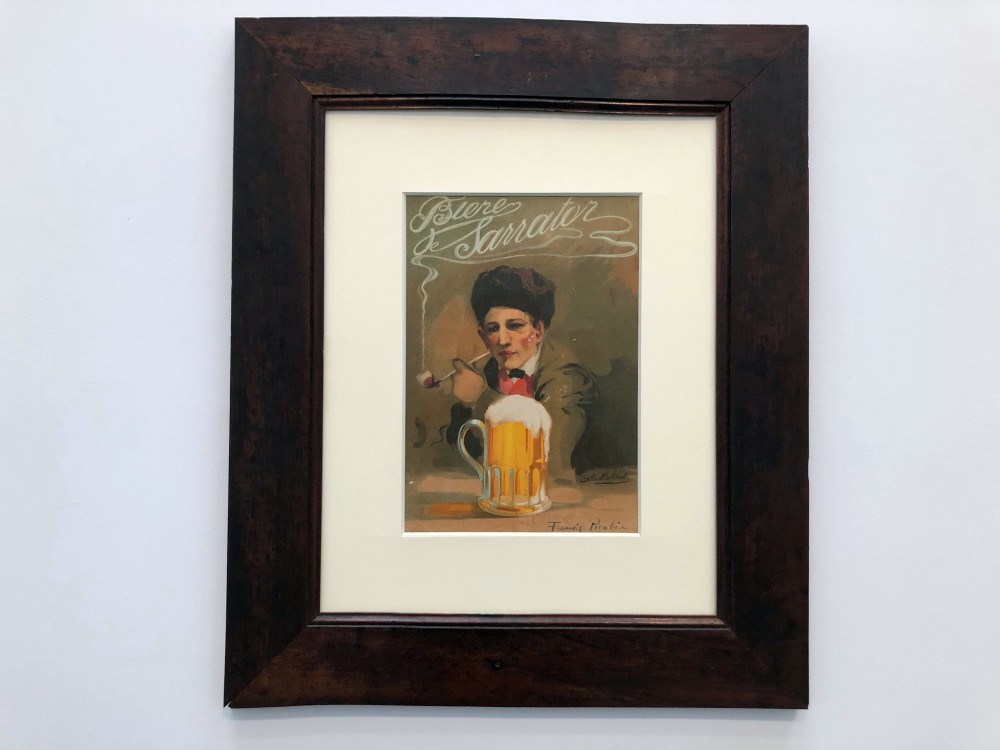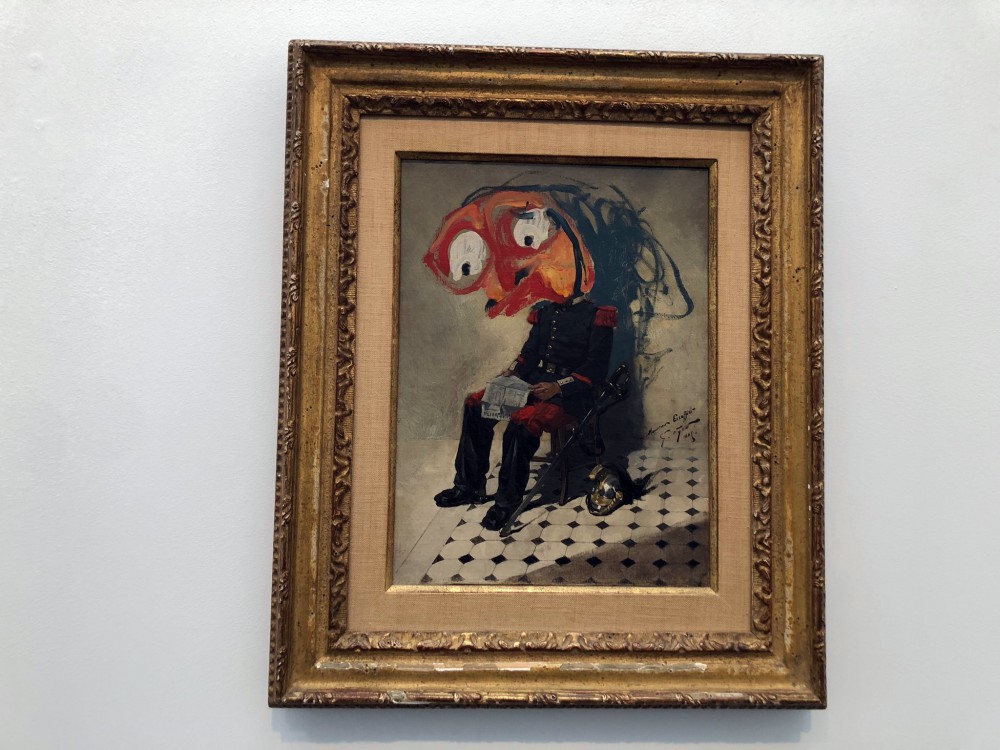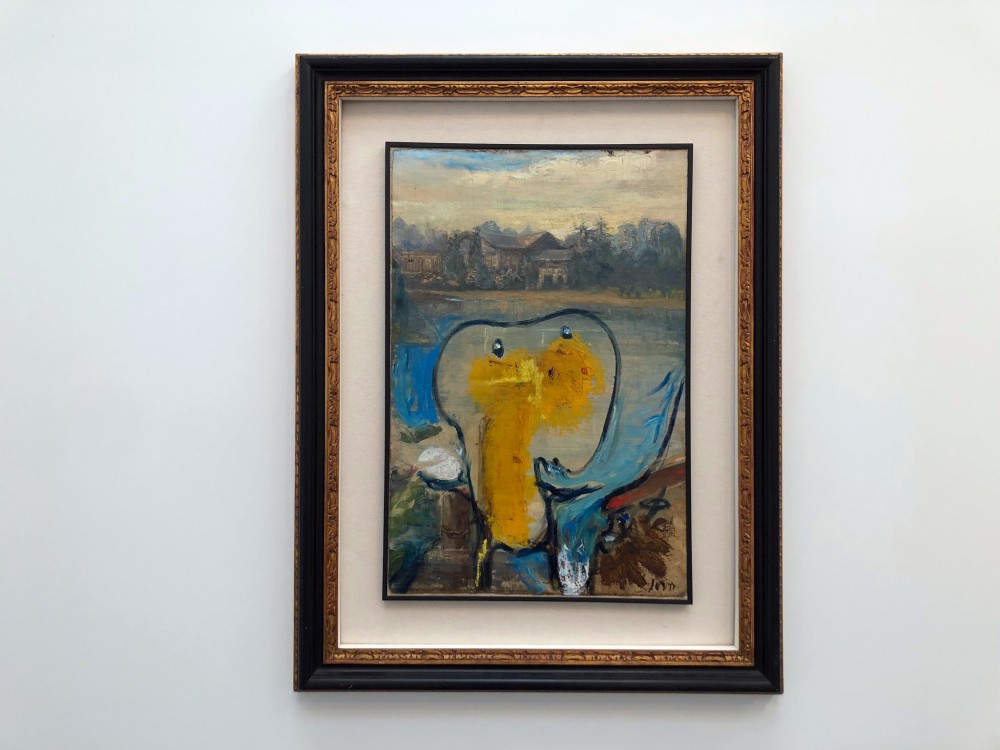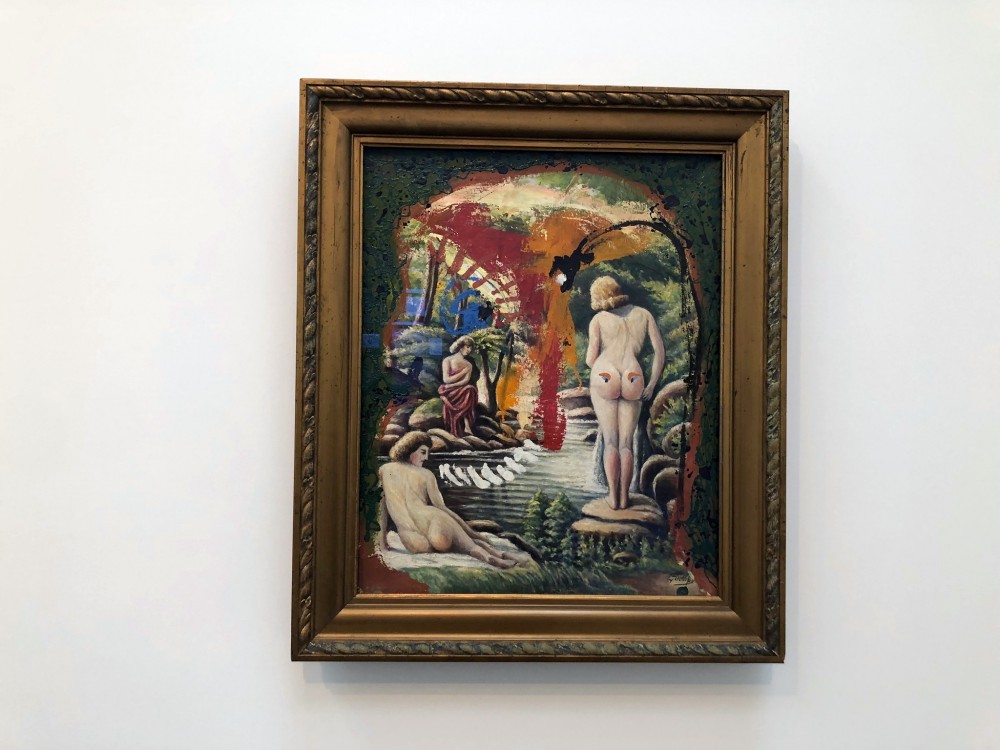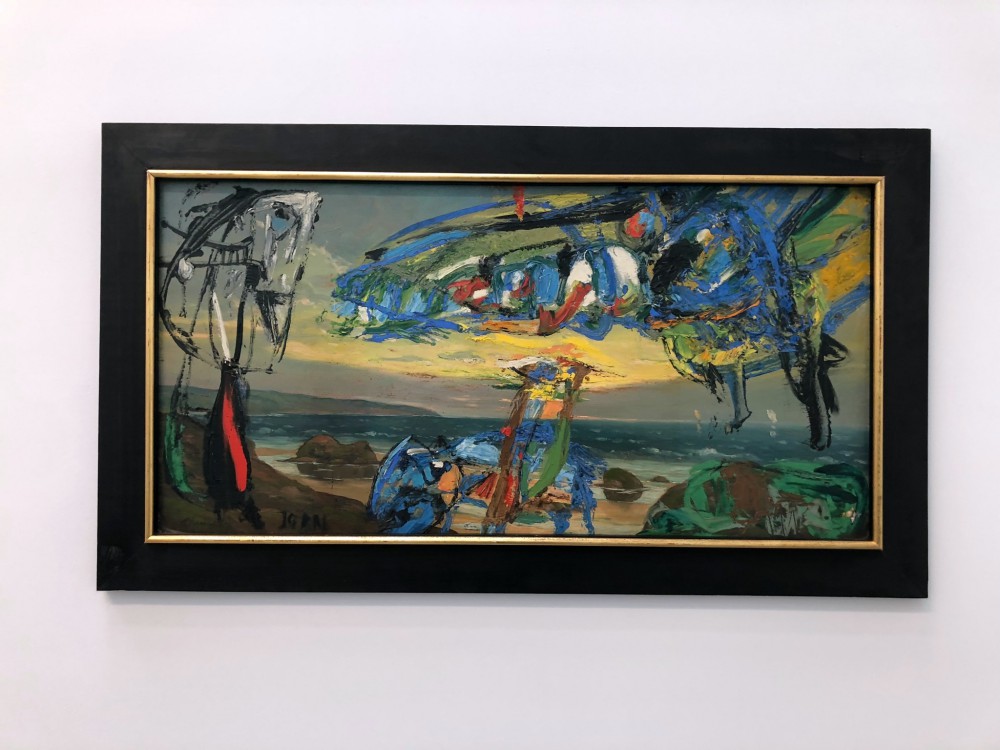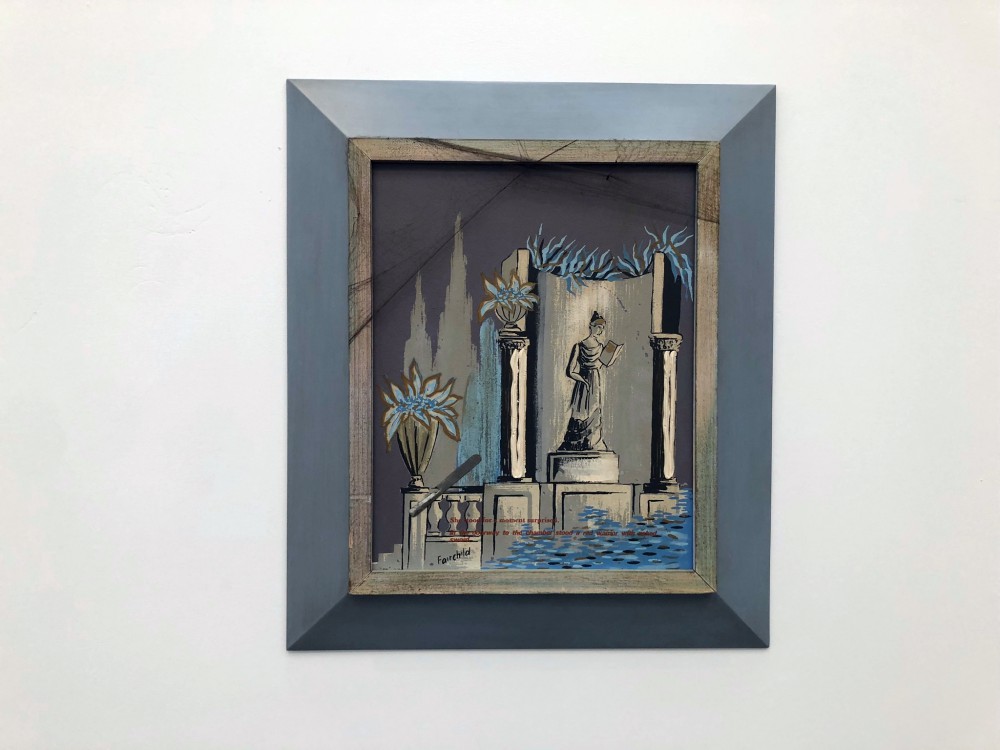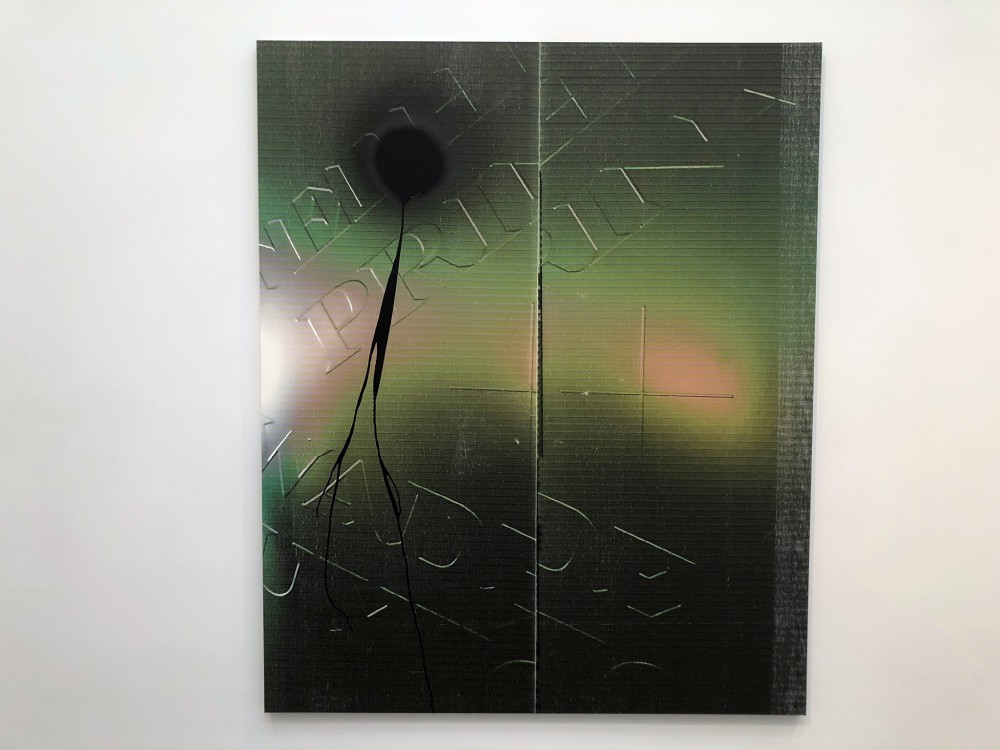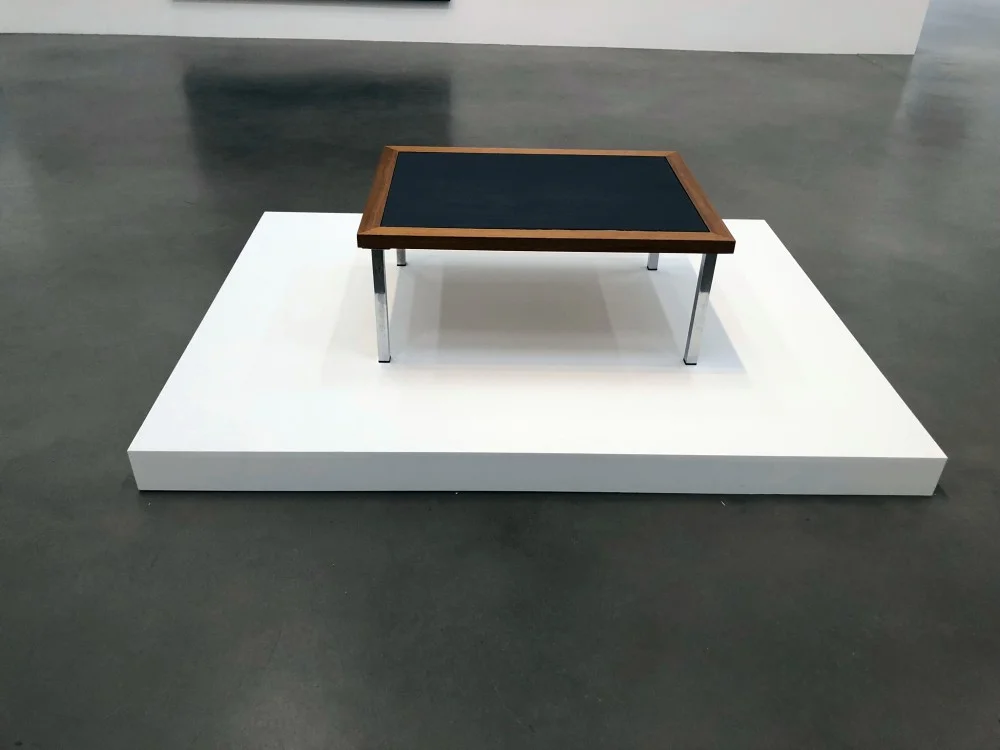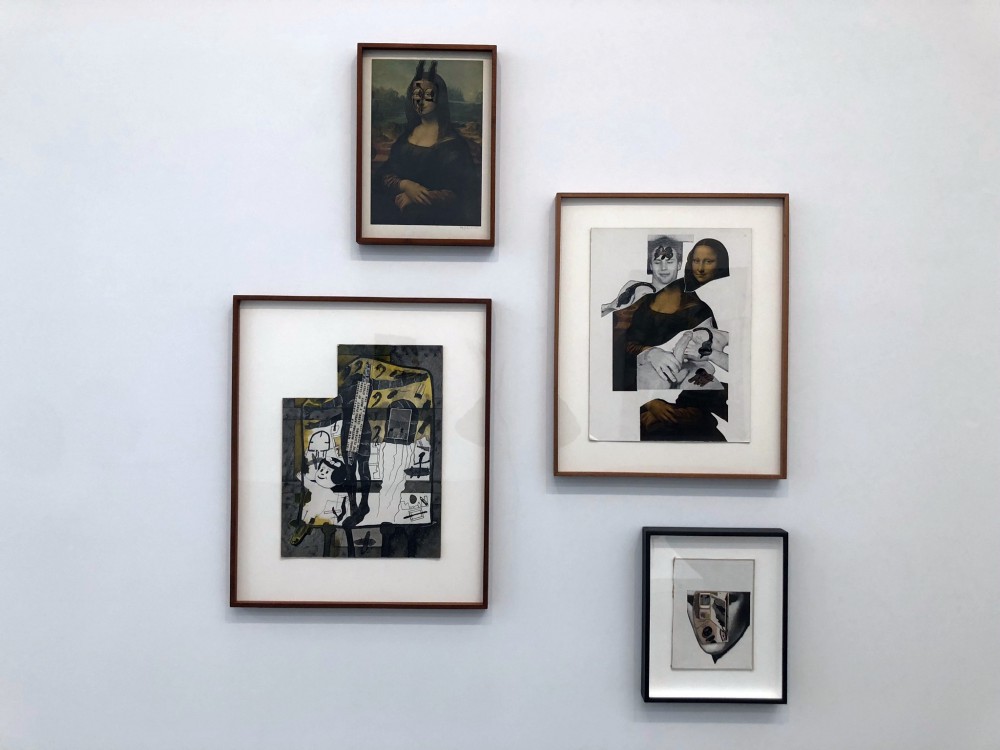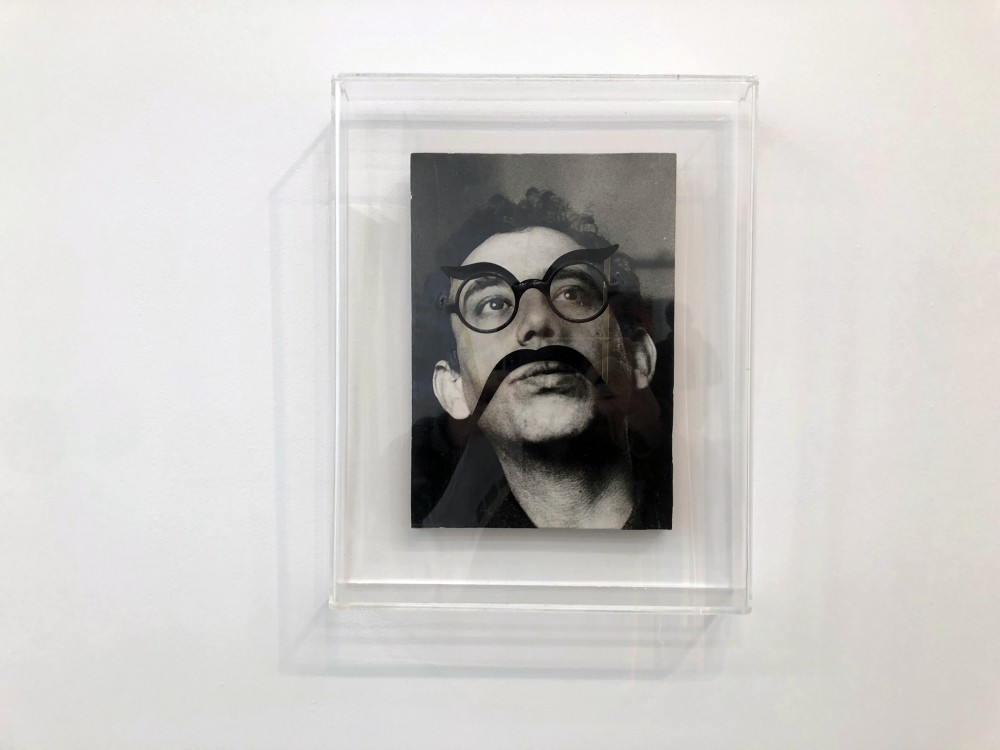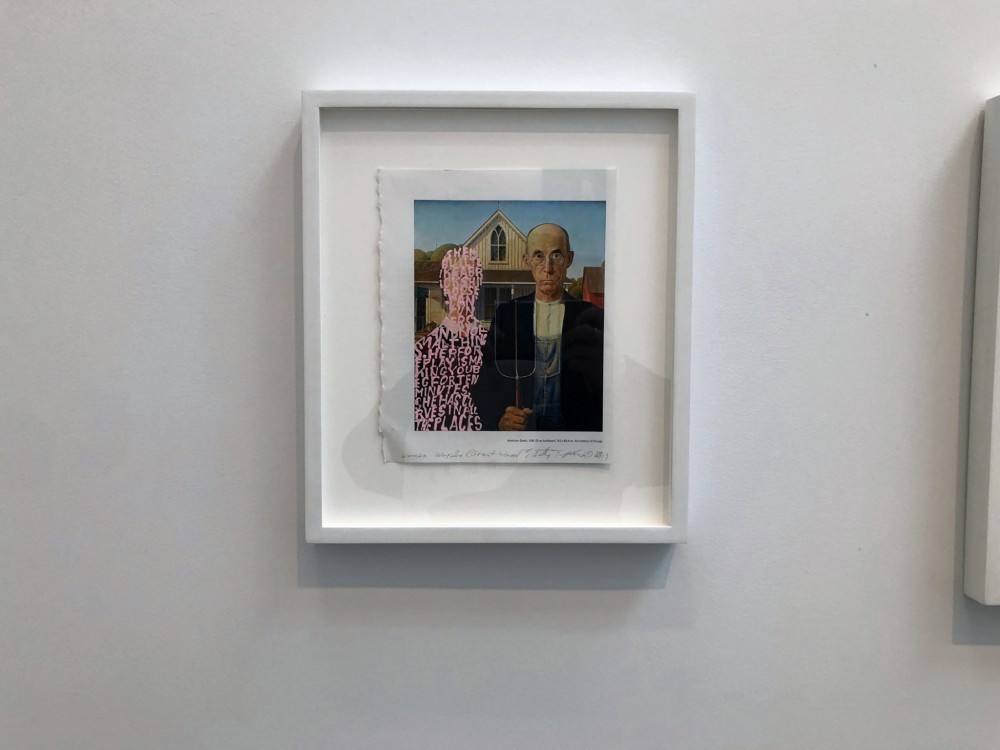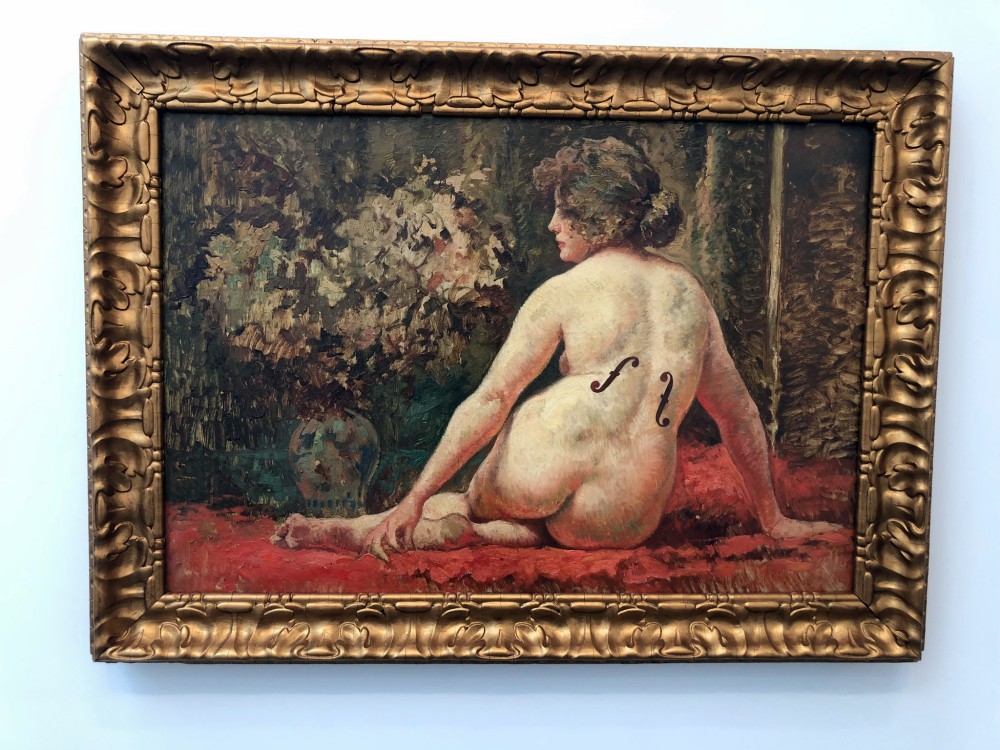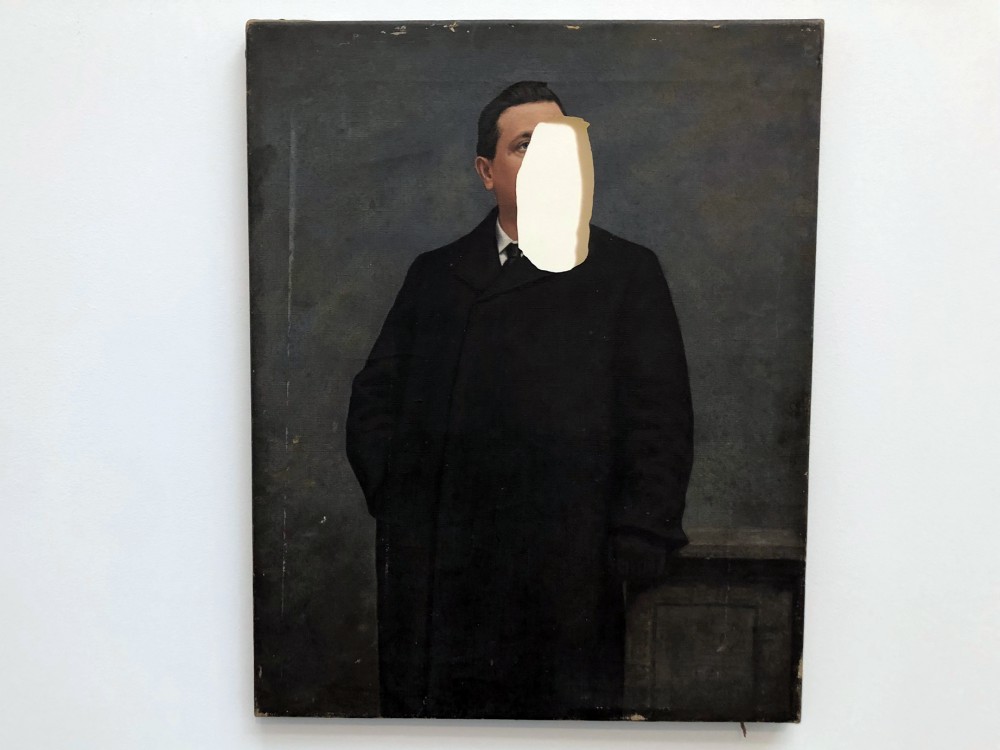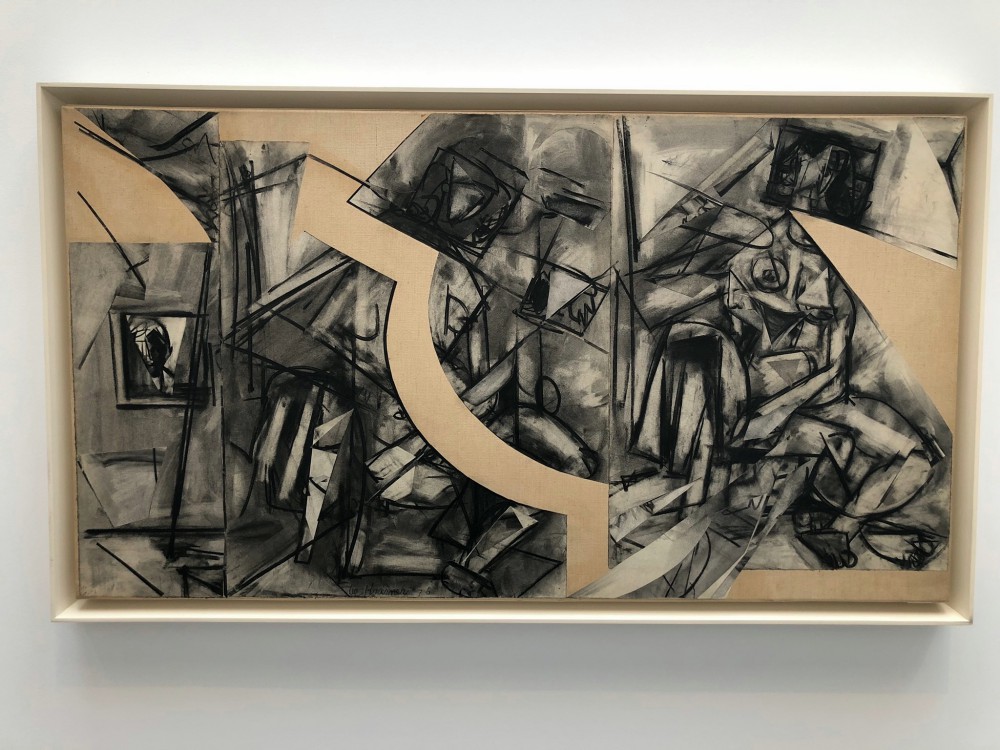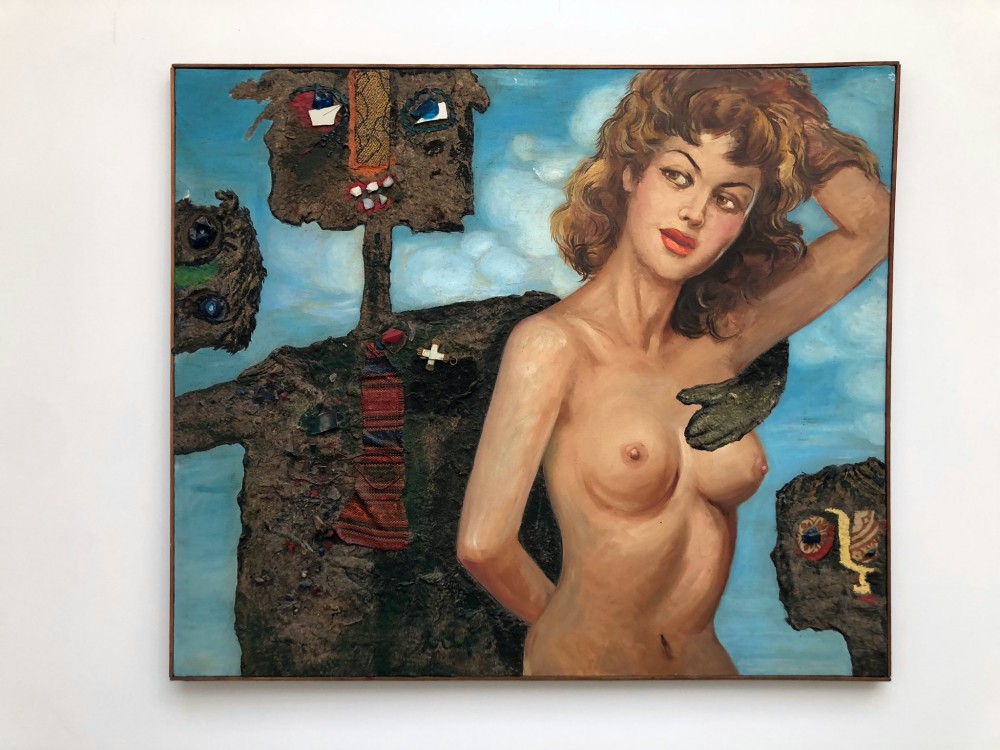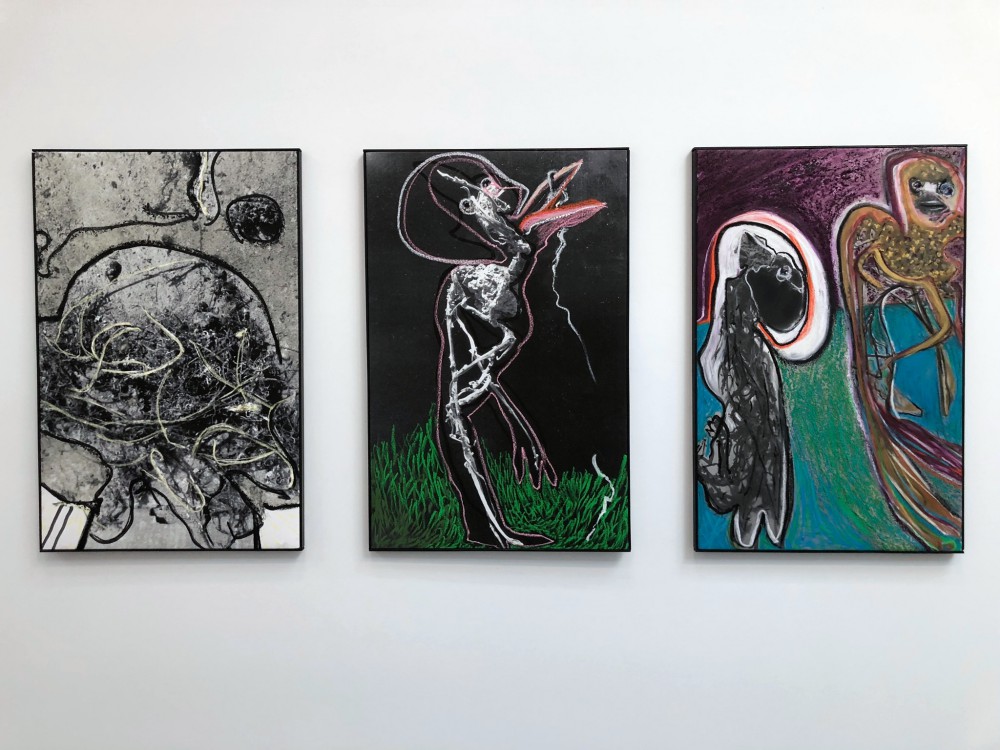Situated in the context of the first thrift store paintings altered by Danish artist Asger Jorn, Strategic Vandalism: The Legacy of Asger Jorn’s Modifications Paintings is a group show of over 30 prominent international artists investigating multifarious appropriation methods spanning from the mid-1960s to the flourishing techniques of the 1980s, up to the present day. Strategic Vandalism: The Legacy of Asger Jorn’s Modification Paintings features works by Enrico Baj, Marcel Duchamp, Max Ernst, Hans-Peter Feldmann, Vidya Gastaldon, Wade Guyton/Stephen Prina, Rachel Harrison, Ray Johnson, Jacqueline de Jong, Asger Jorn, Mike Kelley, Martin Kippenberger, Per Kirkeby, Lee Krasner, Albert Oehlen, Francis Picabia, Stephen Prina, R.H. Quaytman, Arnulf Rainer, Julian Schnabel, Jim Shaw, Gedi Sibony, Alexis Smith, Daniel Spoerri, John Stezaker, Betty Tompkins, and David Wojnarowicz. Strategic Vandalism is on view through April 13 at Petzel Gallery 456 W 18th Street, New York. photographs by Adam Lehrer
Arnulf Rainer Exhibition New, Unfigured and Interesting
A new exhibition by artist Arnulf Rainer of mainly unseen paintings on view at the Arnulf Rainer Museum until April 8, 2013.
The Aesthetics of The Photobooth
When the first photobooths were set up in Paris in 1928, the Surrealists used them heavily and compulsively. In a few minutes, and for a small price, the machine offered them, through a portrait, an experience similar to automatic writing. Since then, generations of artists have been fascinated by the concept of the photobooth. From Andy Warhol to Arnulf Rainer, Thomas Ruff, Cindy Sherman and Gillian Wearing, many used it to play with their identity, tell stories, or simply create worlds. Behind the Curtain - the Aesthetics of the Photobooth, an exhibition created by the Musée de l’Elysée, is the first to focus on the aesthetics of the photobooth. It is divided into six major themes: the booth, the automated process, the strip, who am I ?, who are you ?, who are we ?. Provider of standardized legal portraits, it is the ideal tool for introspection and reflection on others, whether individually or in groups. By bringing together over 600 pieces made on different media (photographs, paintings, lithographs and videos) from sixty international artists, the exhibition reveals the influence of the photobooth within the artistic community, from its inception to the present day.

